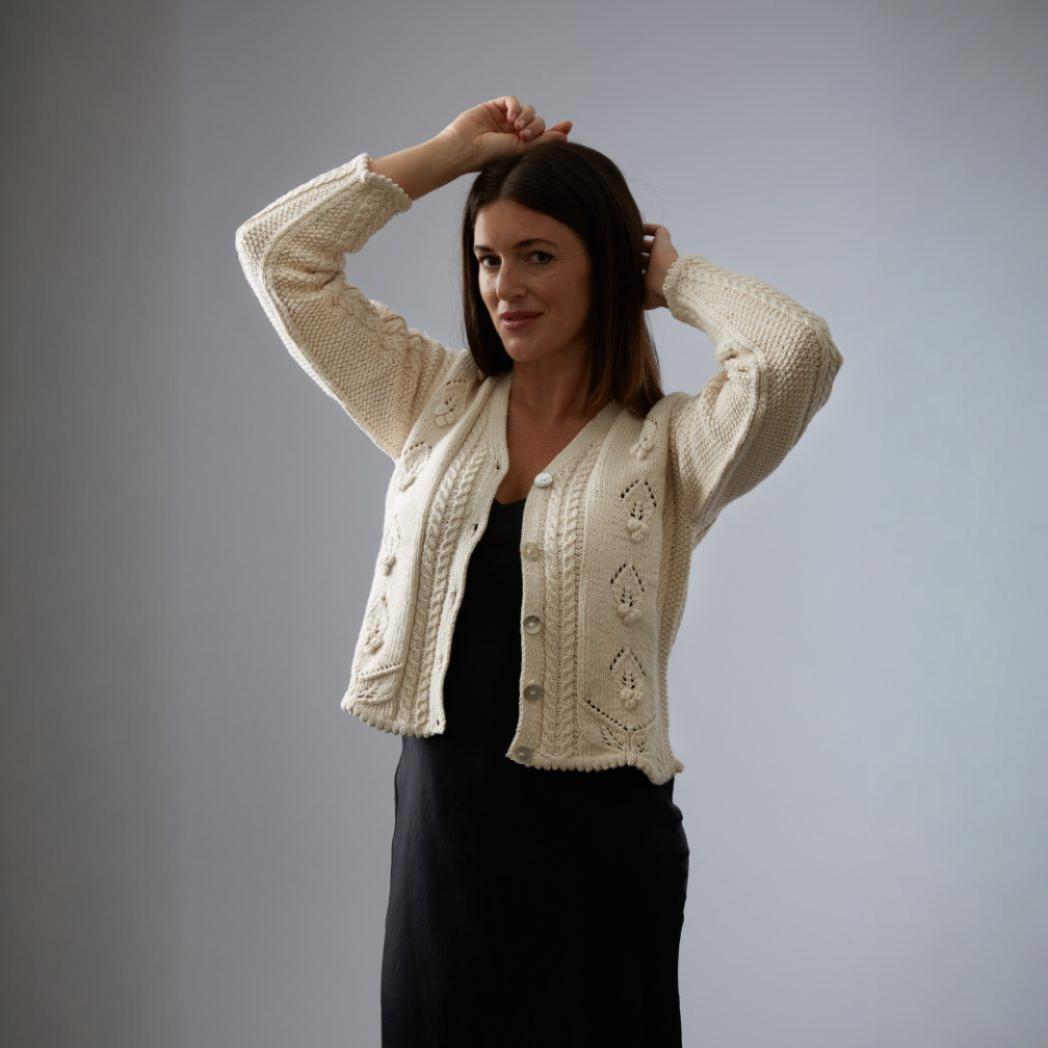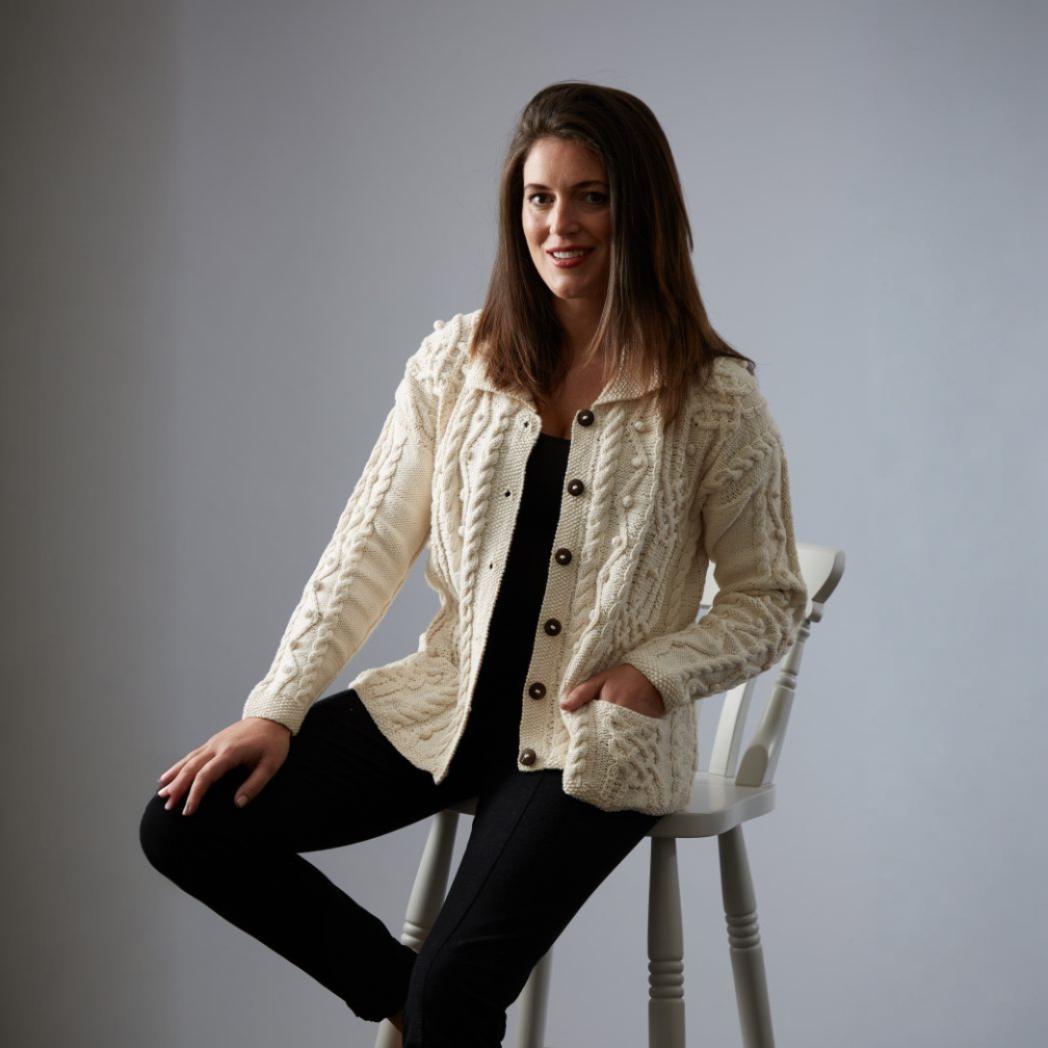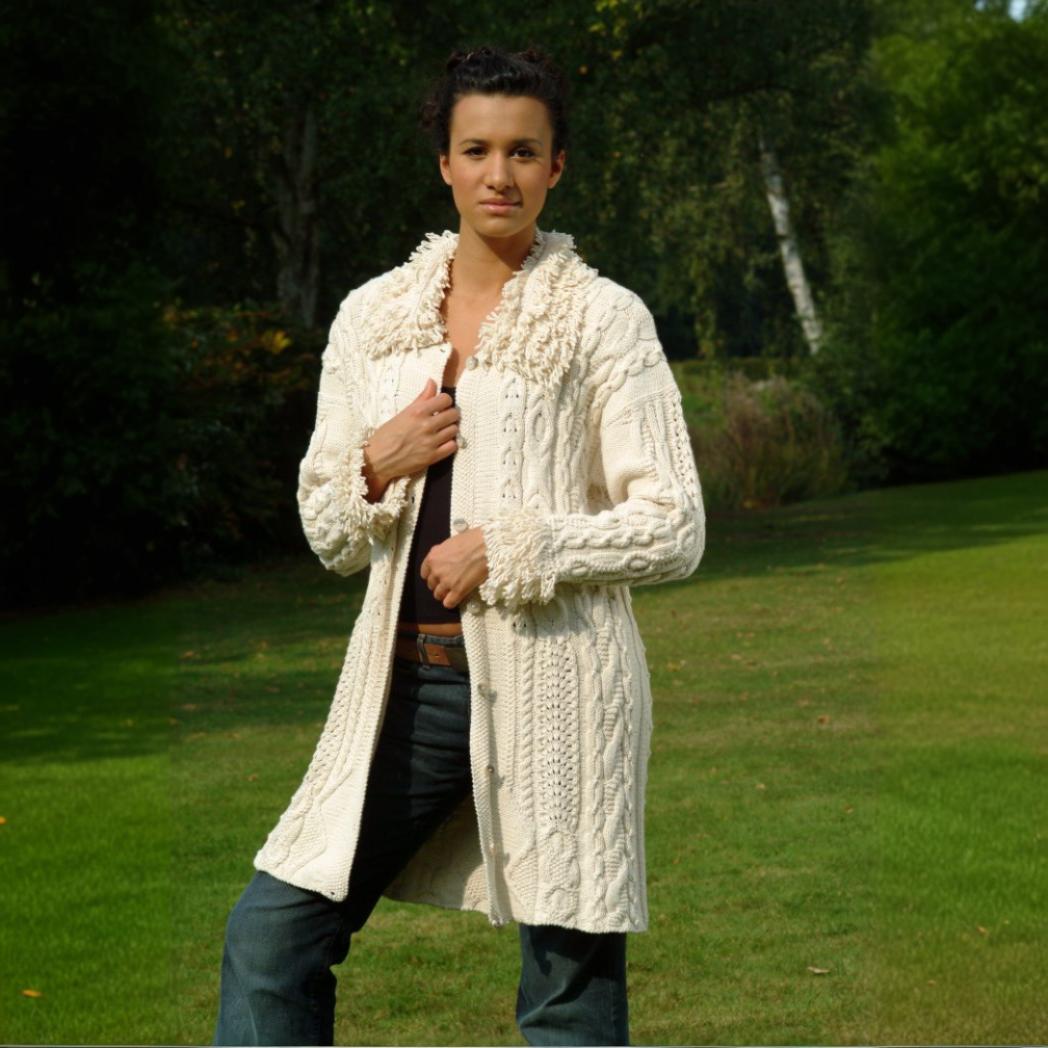History of Celtic Aran Knitting
The story and style of Celtic knitting has many sources. With the development of Celtic Art spanning from about 500BC to AD800, including the Pagan and Christina eras, and no written language as such, the Celts created powerful, evocative, sophisticated images.
Their Art evolved to exude magic and mysticism. In the late 8th Century or earlier, the Book of Kells was created by monks to glorify and celebrate Christ. It is thought that that the rich images and metaphors used in the Celtic visual language, with their interlaced knots and spirals, translated into the intricate techniques used in their knitting patterns.
Across Britain and Ireland a number of areas developed their own distinctive style of knitting for which they became known.
Aran knitting originated in the Aran Islands off the west coast of Ireland. It is characterized by the intricately patterned sweaters that involve lots of knots, cables, bobbles, moss stitch and diamonds. Rough, rugged, romantic and steeped in ancient Celtic history, many myths developed about how Aran sweaters were originally knitted for the fishermen, and that each family used a unique stitch pattern so that bodies of loved ones could be identified if they washed ashore.
Likewise, stories evolved about the knitting patterns being linked to their Clans and reflected elements of Celtic Culture and religion based on the Celtic knots found on the stone crosses and in the Book of Kells.
It is thought that the women of the Aran Islands began to knit these sweaters in the early 1900s, both to clothe their families and to sell to tourists. Knitting was sometimes the only way in which the inhabitants of poor regions were able to subsidise their income. It was a craft that needed little equipment and a skill that could be passed down the generations and was at times practised by men and women alike. These beautiful hand knits became sought after worldwide for their exceptional quality, beauty, individuality and detail.
Originally they were knitted in natural unwashed Bainin Wool (pronounced “Baw neen”), which has a high lanolin content, making them warm even when wet, and offering protection against the brutal climate of the west coast of Ireland. Sometimes natural “Black Sheep” wool with the same protective qualities was used. Originally, the women of the Aran Islands spun their own wool on spinning wheels.
There is no doubt that life on the Aran Islands was precarious for my ancestors. An existence was eked out by fishing and collecting seaweed and the annual harvests were critical to the well-being of the islanders. They lived and died so close to Nature, it is little wonder that perhaps the Aran knitting stitches reflected their concerns and hopes for survival.






